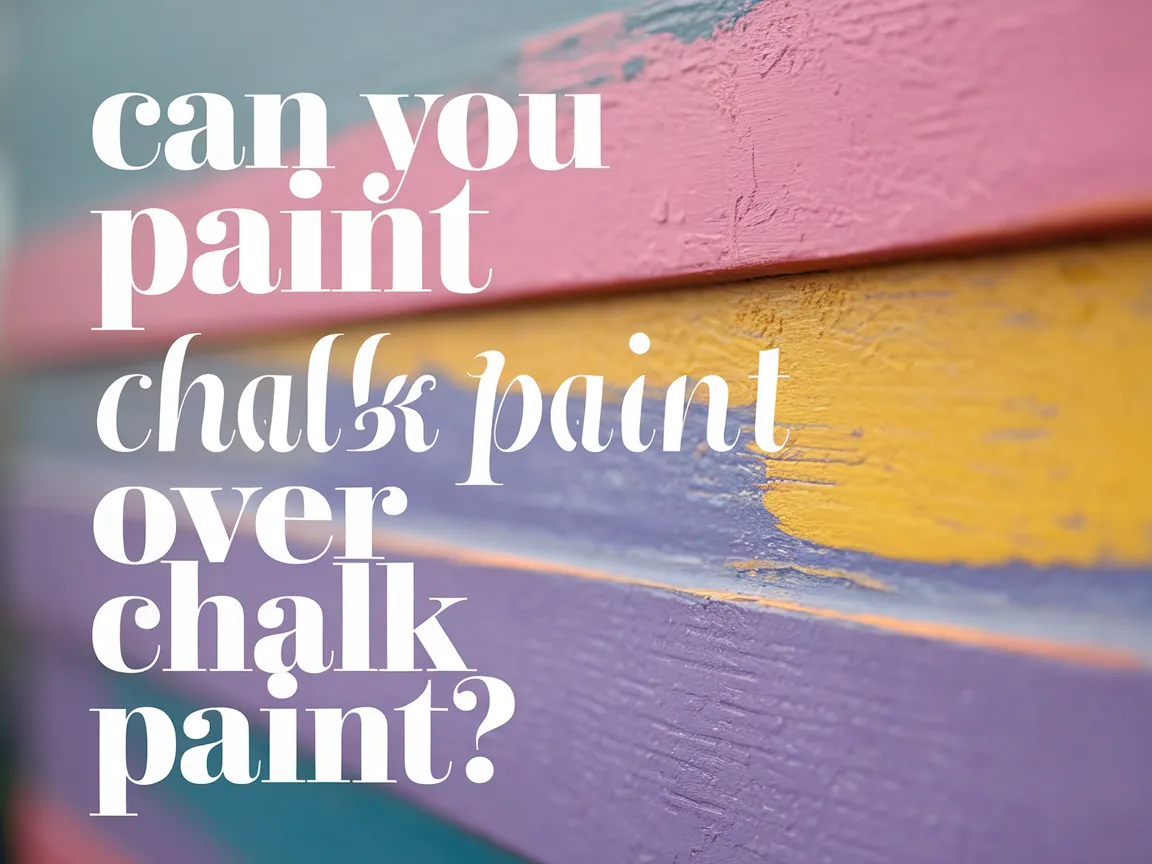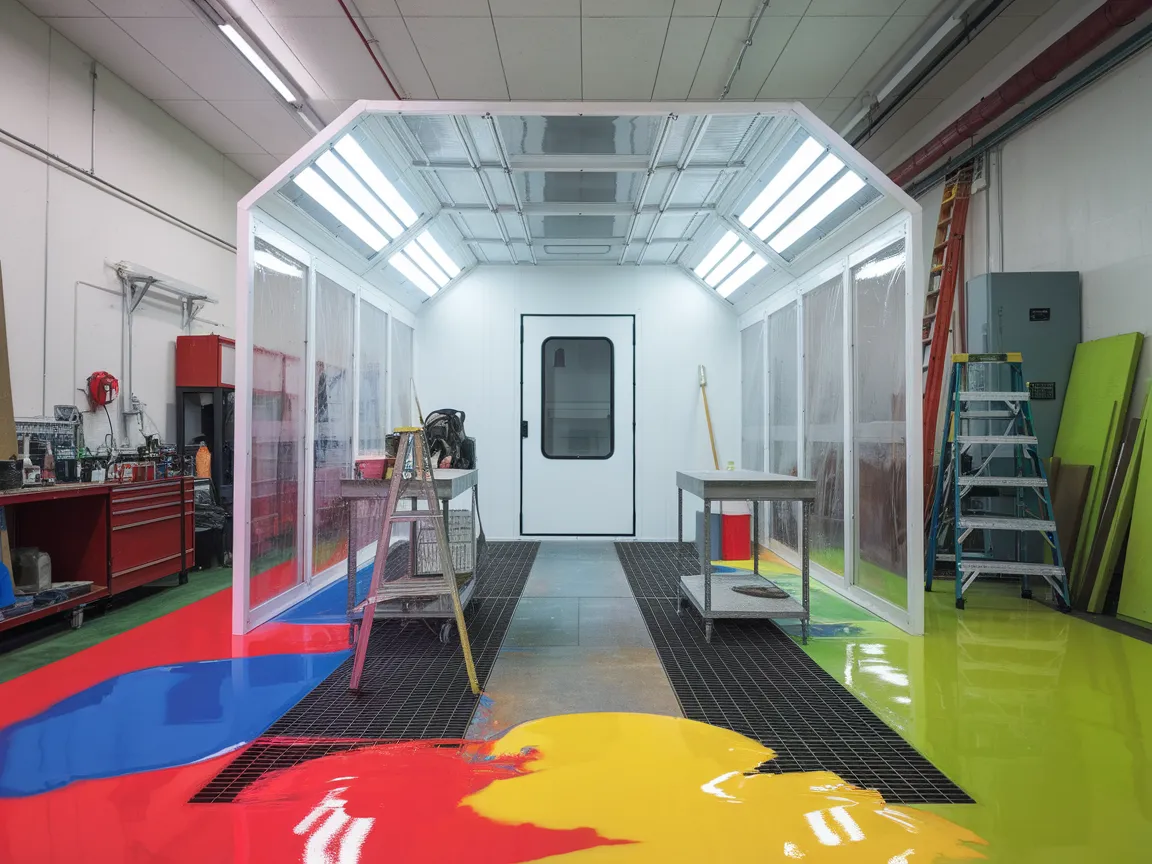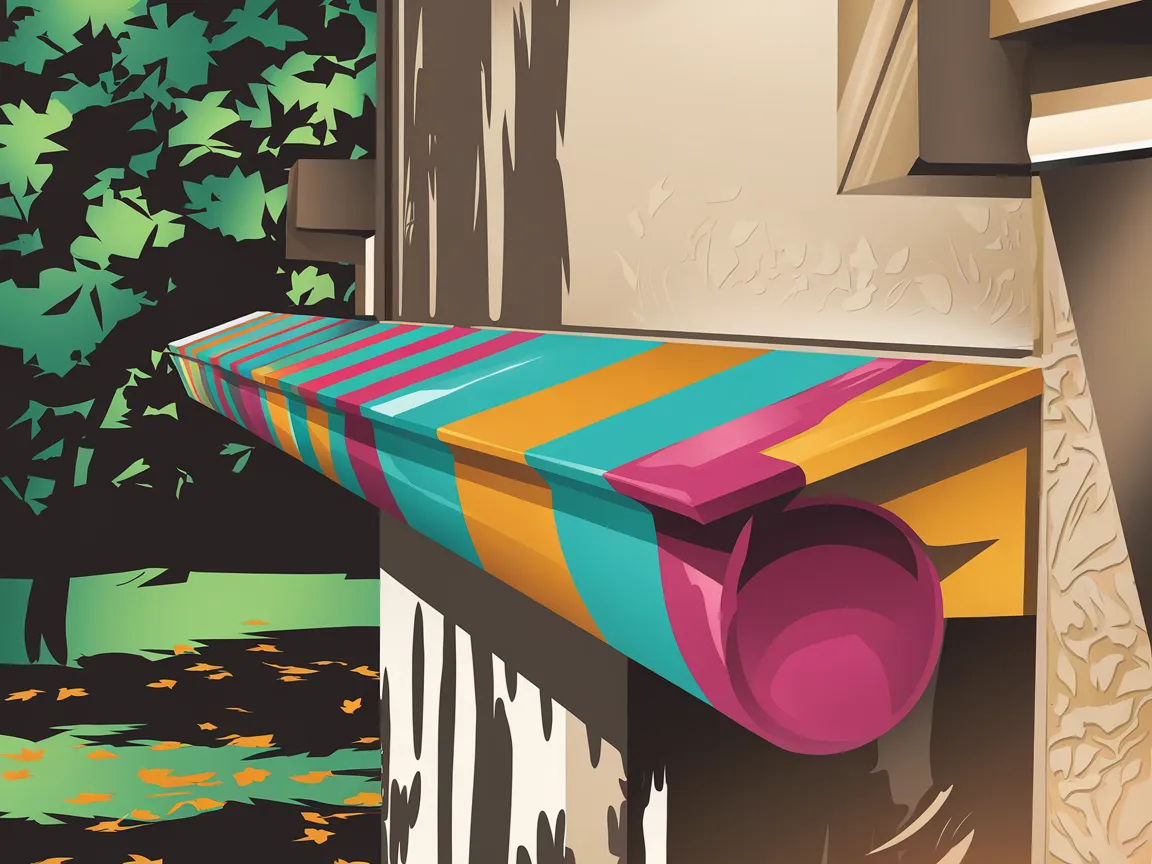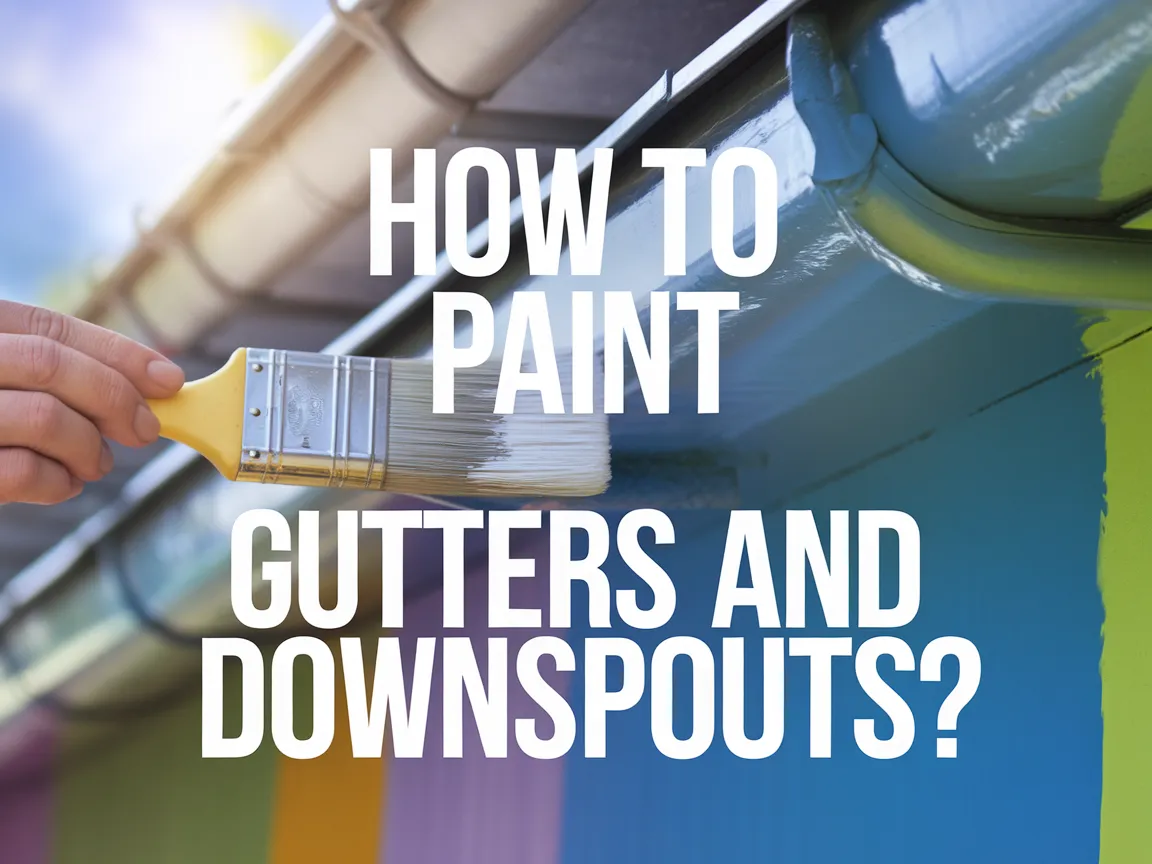How Much Can A Gallon Of Paint Cover?
Published on: June 4, 2025 | Last Updated: January 7, 2025
Written By: Sarah McClintock
Coverage is how much space a gallon of paint can cover. Think of it like a big blanket—when you spread it out, how much area does it warm up?
So, how much can a gallon of paint cover? It’s super important to know this before you start painting. I’ve been there, starting a project all excited, only to run out of paint halfway through. That’s a bummer!
In this guide, we’ll dive into various aspects of how much a gallon of paint covers, essential preparations before painting, effective steps to determine coverage, types of paint and their capabilities, plus tips for common issues. We’ll also explore the cost and weight of a gallon of paint to keep you informed.
Contents
- 1 How Much Can a Gallon Of Paint Cover?
- 2 What is Paint Coverage?
- 3 Essential Preparations Before You Start Painting
- 4 Steps to Determine Coverage Effectively
- 5 Types Of Paint and Their Coverage Capabilities
- 6 Factors Affecting Paint Coverage
- 7 Understanding Paint Finish and Its Impact on Coverage
- 8 Understanding Paint Coverage Versus Paint Finish
- 9 Comparing Different Surface Preps and Their Impact on Coverage
- 10 Price per Square Foot of Coverage
- 11 Common Issues When Estimating Paint Coverage
- 12 Expert Pro Tip
- 13 Creative DIY Project Ideas Using a Gallon Of Paint
- 14 Frequently Asked Questions About Paint Coverage
- 15 Conclusion
- 16 Additional Resources
How Much Can a Gallon Of Paint Cover?
A gallon of paint generally covers about 350 to 400 square feet (32 to 37 Square Meters) in one coat. This depends on the surface texture and the type of paint used. You might need more if you’re repainting walls or going darker. Always check the label for specifics! If you’re considering painting outdoor surfaces like blacktop, painting blacktop requires special techniques.
The Finishing Touch
A freshly painted wall is a blank canvas. The best way to bring your room to life is with a single piece of statement art that ties everything together.
Browse Wall Art at Big Wall DecorWhat is Paint Coverage?
Coverage refers to the area a paint can cover effectively, based on its thickness and type. Most paints cover between 23 to 37 square meters (250 to 400 Square Feet) per gallon, depending on factors like texture and application method. If you’re dealing with challenging surfaces like moldy walls, you’ll want to take extra precautions before painting to address potential black mold issues.
Reflecting on my first painting job, I underestimated how far one gallon would go on a textured surface. It felt like I was painting a never-ending wall, but I learned valuable lessons!
In my experience, I’ve used this knowledge to determine the exact amount I need for specific projects. When considering coverage, it’s crucial to remember the cost of a gallon of paint, as it influences my budget for each endeavor. Unexpected paint damage can quickly escalate repair costs, so understanding potential risks is key to protecting your vehicle’s paint surface.
Essential Preparations Before You Start Painting
What do you need to measure coverage accurately?
- Measuring Tape: You’ll need a measuring tape, such as the Stanley 33-106, to calculate wall dimensions for accurate coverage.
- Paint Calculator: Use a paint calculator like the Behr Paint Coverage Calculator to determine area sizes and paint requirements based on your measurements.
- Stir Stick: Grab a stir stick, such as the Wooster Brush Stainer, to mix your paint thoroughly. Proper mixing ensures uniform color and coverage.
- Drop Cloth: A drop cloth, like the Trimaco SuperTuff, is essential. It protects floors and furniture from paint spills, making cleanup easier.
- Paint Sheen Samples: Get samples of different sheens, such as Sherwin-Williams matte and eggshell, to evaluate coverage quality based on finish type.
We have now covered essential preparations for painting. Next, we will discuss steps to determine coverage effectively.
Also See: Can You Paint a Pool? Discover Your Options!

The Finishing Touch
A freshly painted wall is a blank canvas. The best way to bring your room to life is with a single piece of statement art that ties everything together.
Browse Wall Art at Big Wall DecorSteps to Determine Coverage Effectively
Here are the steps to figure out paint coverage for your project.
-
Calculate the Area You Plan to Paint
Measure each wall or surface in square feet (Ft²). One gallon of paint typically covers about 350 to 400 ft² (32.5 To 37.2 M²).
Add the areas to get a total. If you’re painting multiple rooms, don’t forget to include all surfaces, like window frames and doors, which may affect the final number.
-
Understand the Paint’s Coverage Specifications
Check the label on your paint can for coverage specifics. Some brands state coverage of up to 450 ft² (41.8 M²) for a single coat, or less for specialty paints.
Different finishes require different coverage. For instance, flat finishes typically cover more than glossy ones due to variations in paint composition.
-
Consider the Number Of Coats Required
Add coats to your calculations. For light colors on dark surfaces or to enhance paint vibrancy, you may need two or three coats.
Each additional coat reduces effective coverage, so multiply the total area by the number of coats planned. For example, if your area is 300 ft² (27.9 M²) with two coats, you’ll need to cover 600 ft² (55.7 M²) total. When dealing with surface imperfections, you might want to explore repairing paint with Bondo for a smoother finish.
-
Evaluate Surface Type and Condition
Inspect your surfaces—smooth ones absorb less paint than rough textures. Porous or textured surfaces may require up to 25% more paint.
If you’re repainting, sand or clean the surface well to improve adherence and prevent wasting paint due to poor preparation. Diligent prep work can save you from regrets later!
We’ve wrapped up the steps for effective coverage assessment here. Let us turn our attention to types of paint and their coverage capabilities.
Types Of Paint and Their Coverage Capabilities
Let’s discuss the different types of paint: Latex, Oil-Based, Acrylic, and Enamel.
-
Latex Paint
Latex paint is water-based and easy to clean with soap and water. A gallon (3.8 Liters) covers about 300 to 400 square feet (27 to 37 Square Meters).
-
Oil-based Paint
Oil-based paint offers durability and a rich finish but requires mineral spirits for cleanup. A gallon (3.8 Liters) covers about 250 to 350 square feet (23 to 32 Square Meters).
-
Acrylic Paint
Acrylic paint dries quickly and is flexible, making it ideal for both indoor and outdoor use. A gallon (3.8 Liters) covers about 200 to 300 square feet (18 to 28 Square Meters).
-
Enamel Paint
Enamel paint provides a hard, glossy finish that’s suitable for high-traffic areas. A gallon (3.8 Liters) generally covers 250 to 350 square feet (23 to 32 Square Meters).
Reflecting on my experiences, one thing stands out about latex paint. It’s my favorite because of its easy cleanup and broad coverage, making DIY projects effortless.
We have now covered various paint types and their coverage abilities. The next section discusses factors influencing paint coverage.
Factors Affecting Paint Coverage
What factors determine how effectively a gallon of paint works?
-
Surface Texture: Rough surfaces require more paint, reducing the coverage area.
-
Color of the Paint: Lighter colors typically need more coats to cover dark surfaces.
-
Type of Paint: Different finishes (Matte, Gloss) have varying coverage rates per gallon.
-
Application Method: Spraying uses more paint than rolling, affecting how far a gallon goes.
That covers the elements influencing paint coverage. Let’s now take a look at paint finish and its effects on coverage.
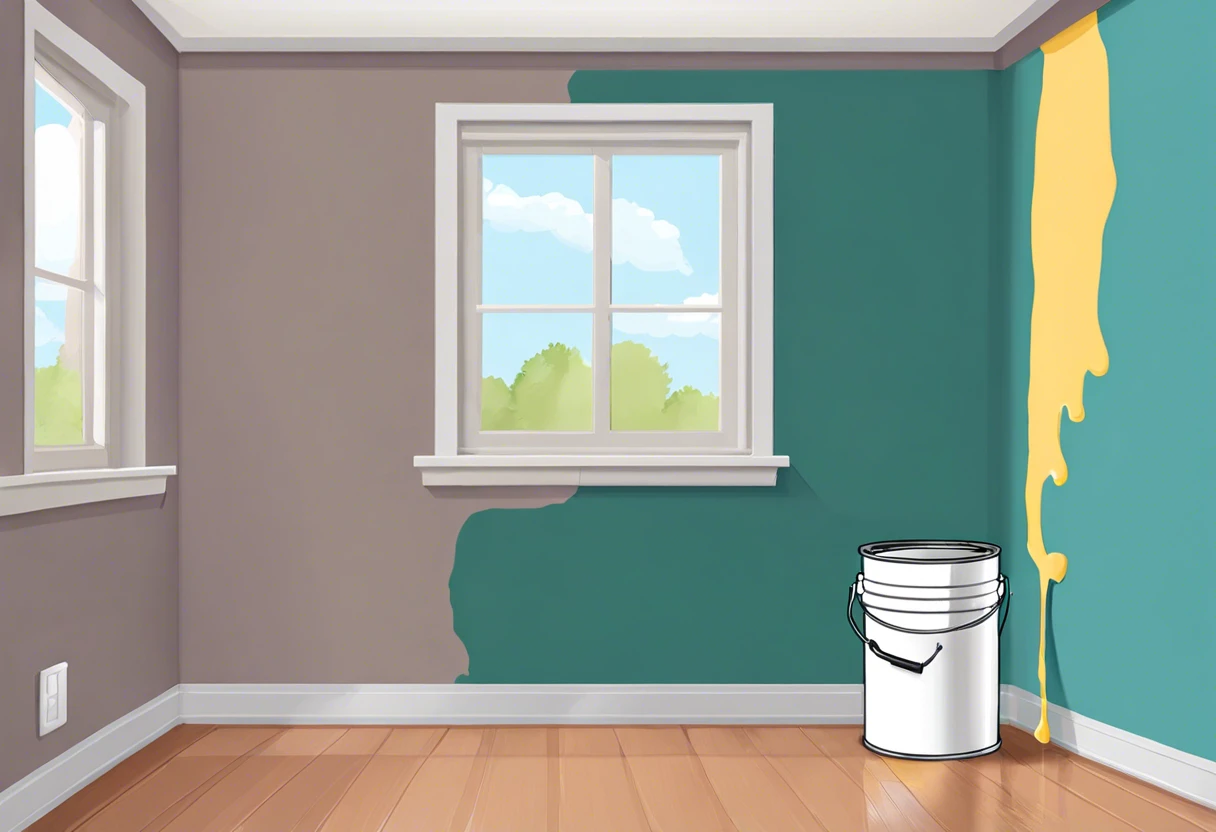
Understanding Paint Finish and Its Impact on Coverage
The type of finish you choose can greatly affect how a gallon of paint covers. Let’s break it down!
-
Flat (Matte) Finish
This finish has no shine and soaks in paint well. It typically covers about 400 square feet (37 M²) easily. Use it for ceilings or walls with imperfections.
-
Satin Finish
A satin finish gives a soft luster and covers around 350 square feet (32.5 M²). It’s great for living spaces where durability matters and light shine is desired.
-
Eggshell Finish
Eggshell offers a mid-range sheen, covering about 300 square feet (27.9 M²). You might prefer this for rooms, as it’s easy to clean without being too glossy.
-
Gloss Finish
This one’s shiny and reflects light, covering approximately 250 square feet (23.2 M²). Glossy finishes are perfect for trims and cabinets but may require more coats on dark colors.
Understanding Paint Coverage Versus Paint Finish
Let’s explore how paint coverage interacts with the finish of your project.
The Role of Sheen in Coverage
Sheen really matters when it comes to how much paint you need. Different finishes absorb paint differently, affecting overall coverage.
- Flat (Matte) Finish: Covers up to 400 square feet (37 m²), as this type soaks in paint and hides imperfections.
- Satin Finish: Covers about 350 square feet (32.5 m²). It provides some sheen but requires more paint than matte finishes.
- Eggshell Finish: Offers a middle ground with coverage around 300 square feet (27.9 m²). It’s versatile for many spaces.
- Gloss Finish: Typically covers approximately 250 square feet (23.2 m²), needing additional coats for dark colors.
Comparing Different Surface Preps and Their Impact on Coverage
Surface preparation plays a huge role in how effectively a gallon covers. Let’s break it down with a quick comparison.
| Surface Type | Recommended Prep | Average Coverage (ft²) | Comments |
|---|---|---|---|
| Smooth Drywall | Clean and primed | 350 – 400 | Best performance and coverage. |
| Textured Walls | Clean, patch, and prime | 250 – 350 | Rough surfaces absorb more paint. |
| Wood | Sanded and primed | 300 – 350 | Prep is key for a good finish. |
| Previously Painted Surfaces | Clean and lightly sanded | 250 – 300 | Depends on prior paint condition. |
The Finishing Touch
A freshly painted wall is a blank canvas. The best way to bring your room to life is with a single piece of statement art that ties everything together.
Browse Wall Art at Big Wall DecorPrice per Square Foot of Coverage
It’s important to consider the cost-effectiveness of paint for your projects. Here’s a quick breakdown.
| Paint Type | Average Cost per Gallon ($) | Coverage per Gallon (ft²) | Cost per ft² ($) |
|---|---|---|---|
| Latex | $30 | 350 | 0.086 |
| Oil-Based | $40 | 300 | 0.133 |
| Acrylic | $35 | 250 | 0.140 |
| Enamel | $45 | 250 | 0.180 |
Common Issues When Estimating Paint Coverage
When my friend painted his living room, he struggled with how much a gallon of paint can cover. He didn’t consider the texture of his walls, which consumed more paint than expected.
To fix this, he should’ve calculated the surface area (About 37 M² Per Gallon) and added 10% for rough textures. That’s key for accurate coverage!
Expert Pro Tip
Professionals mix 10% compatible additives, like Floetrol, per gallon (3.78 Liters) for better flow in humid conditions while ensuring even coverage.
Creative DIY Project Ideas Using a Gallon Of Paint
Ever thought about creating a stunning painted floor mat or a one-of-a-kind art piece? You can turn a simple canvas tarp into an outdoor masterpiece or jazz up a thrift store find with spunky colors!
To tackle these projects, I’d grab a gallon of paint, some brushes, and a tarp or an old frame. For about $30 to $50, you’ll get all the supplies you need, and they’ll take just a few hours to complete! When working on specialized painting tasks like marine projects, I recommend checking out some professional techniques for painting boat surfaces effectively.
Alternatives? You can try mixing paint with sand for texture or use it to create colorful, removable wall designs. I once even painted my stepping stones—it’s fun and another unique spin on “how much can a gallon of paint cover”! If you’re wondering about adjusting paint consistency, you might want to exterior wall painting techniques.
Frequently Asked Questions About Paint Coverage
What is the Average Coverage Of a Gallon Of Paint?
An average gallon of paint covers about 350 to 400 square feet (32.5 To 37 M²) in one coat. Coverage can vary based on the surface texture and type of paint used.
Does the Type Of Paint Affect Coverage?
Yes, the type of paint does affect coverage. Different paint compositions—latex, oil-based, or acrylic—have distinct formulations that influence how much area they can cover. Generally, oil-based paints cover slightly less than latex. When you’re looking to achieve precise coverage, choosing the right paint for airbrush techniques becomes crucial for your project’s success.
How Many Coats Of Paint Do I Need for Good Coverage?
You typically need two to three coats of paint for good coverage. This helps avoid stains and provides a uniform finish, particularly over bold colors.
Can I Thin My Paint for Better Coverage?
Yes, you can thin your paint for better coverage. Thinning helps improve flow and workability but can reduce color depth. Use paint thinner sparingly, as too much can lead to increased transparency. If you’re wondering about alternative thinning solutions, acetone offers unique paint thinning properties.
What Should I Do if I Run Out Of Paint?
If you run out of paint, check stores nearby for the exact match or blend. Finish your job promptly to avoid noticeable color variations in overlapping areas.
How Much Does a Gallon Of Paint Weigh?
A gallon of paint weighs about 6 to 12 pounds (2.7 To 5.4 Kg), depending on the density of the paint. This weight can impact transport and ease of application.
What Factors Influence Paint Coverage to Change?
Several factors change paint coverage, including the porosity of the surface, method of application, and exterior painting environmental conditions. High humidity or extreme temperatures can cause variations in coverage efficiency.
How Much Does a Gallon Of Paint Cost?
The cost of a gallon of paint ranges from $15 to $70, depending on quality and brand. Premium options may offer better coverage and longevity, making them more economical in the long run.
Also See: Can Landlord Charge for Painting? Know Your Rights!
Conclusion
Thank you for staying with us throughout this guide. We explored a variety of topics including gallon coverage, paint types, preparation steps, color recommendations, factors impacting coverage, troubleshooting estimation issues, and expert tips for achieving a polished finish in your DIY projects.
In summary, a gallon of paint typically covers about 350 to 400 square feet (32.5 to 37.2 m²) with a single coat, influenced by factors like surface texture and paint selection. Best of luck with your painting endeavors!
For more insights on painting techniques, please visit Paint Answers.
Additional Resources
- Smith, R. (2003). The Artist’s Handbook of Materials and Techniques (5th ed.). New York, NY: Knopf.
- Paint Coverage 101: How Much Does a Gallon of Paint Cover?
- If 1 gallon of paint can paint about 400 square feet, how many gallon of paint will be need to paint a wall with 2 coats? – Quora






